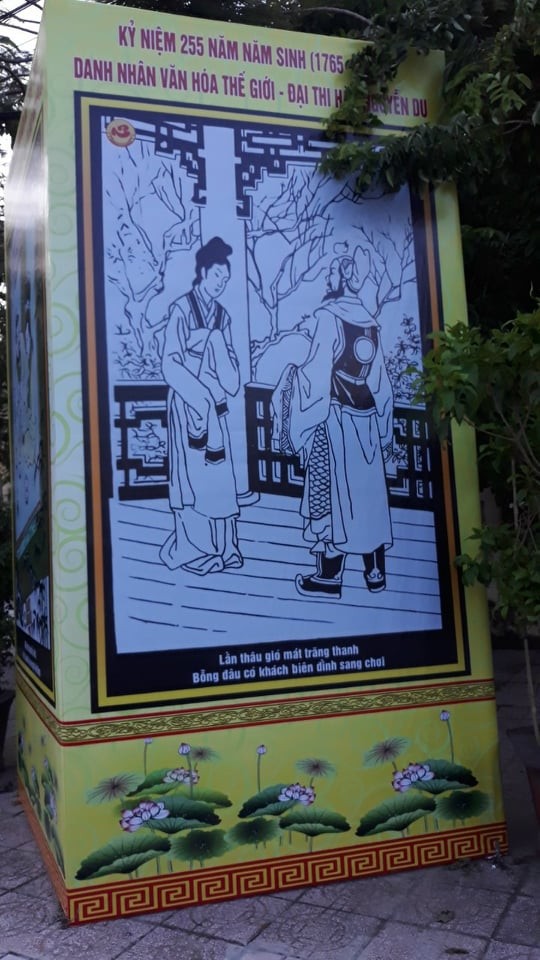(VOVWORLD) - Nghi Xuan district in Ha Tinh province plans to build new-style rural areas based on combining traditional culture and tourism development. Under the plan, the great Vietnamese poet Nguyen Du’s “The Tale of Kieu,” a masterpiece of Vietnamese classical epic poetry, will serve as a model for instilling beautiful values in new-style rural communities.
 The great Vietnamese poet Nguyen Du’s “The Tale of Kieu” is the key to instilling beautiful values in new-style rural communities in Nghi Xuan district, Ha Tinh province. (Photo: VOV) The great Vietnamese poet Nguyen Du’s “The Tale of Kieu” is the key to instilling beautiful values in new-style rural communities in Nghi Xuan district, Ha Tinh province. (Photo: VOV) |
Before the onset of a fourth wave of COVID-19, teacher Phan Thi Hanh of Xuan Thuy kindergarten in Nghi Xuan district, lulled her pupils to sleep every noon by reading verses from Kieu.
20-year-old Hanh has taught for several years already at this kindergarten in the homeland of the great poet Nguyen Du. She says Xuan Thuy kindergarten isn’t the only school in the district that includes “The Tale of Kieu” in its curriculum.
“At home, grandparents sing lullabies whose words come from Kieu verses. Many kindergartens use Kieu verses to lull the children to sleep at noon so they will learn the poem while they are little. They might not understand the whole story, but they can begin to feel something of its meaning through these lullabies,” said Hanh.
The people of Nghi Xuan want to make “The Tale of Kieu” the foundation on which to build their new-style rural areas. All cultural values will be rated for cultural typicality and the most typical will be used to develop tourism products.
Nguyen Hai Nam, Chairman of the Nghi Xuan district People's Committee, said these cultural values will evoke people’s pride in their homeland’s cultural traditions and this pride will fuel specific activities in their new-style rural development programs.
According to Nam, “Nghi Xuan’s new-style rural building is special as it’s based on traditional cultural values. We have two goals: develop the local economy and preserve and promote traditional cultural values, especially typical village cultural values. Intangible cultural values are a national resource. To preserve and promote them, they must be loved and respected by local people.”
Under Nghi Xuan’s new-style rural building criteria, each residential area must have a well-run folk art club. All 152 residential areas and schools in the district already have clubs for trò Kiều (folk singing based on Kieu verses), ca trù (ceremonial singing), Nghe Tinh folk singing, sắc bùa (Lunar New Year greeting) singing, and chầu văn (ritual singing).
The idea is that the standardized residential areas will become tourist destinations which will generate income for the rural building program.
Nguyen Mau, who has worked for years with folk art clubs, said, “Tourists who visit these villages get interested in the different folk art genres. Celebrating the 255th birthday of Nguyen Du last year, folk art clubs began staging performances at 6 am. All visitors enjoy ‘The Tale of Kieu.’ In my opinion, building a new rural area should begin with building civilization.”
The Chairman of Nghi Xuan district said the district plans to build an enhanced new rural area and become a heritage city with sustainable values.
“We want to make Nghi Xuan a heritage city based on tangible and intangible cultural values, especially those cultural values left by Nguyen Du. To this end, Nghi Xuan will instill the values of Nguyen Du into its tourism products. We hope this will become a good source of income when these values become familiar at the international level,” said Nam.